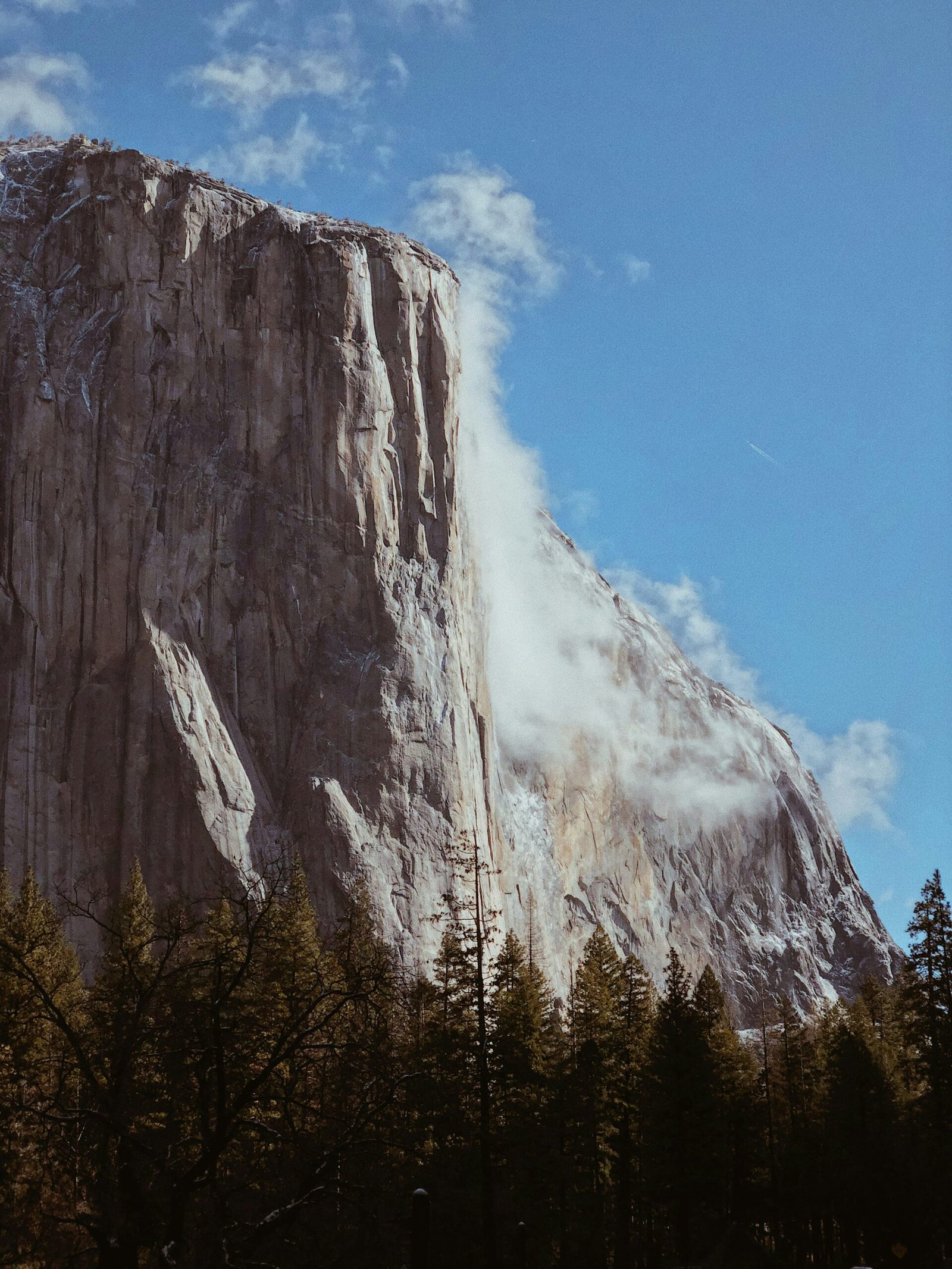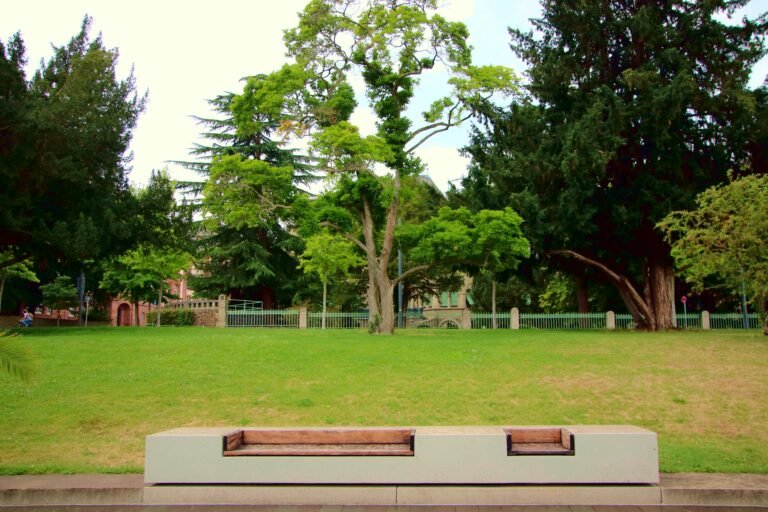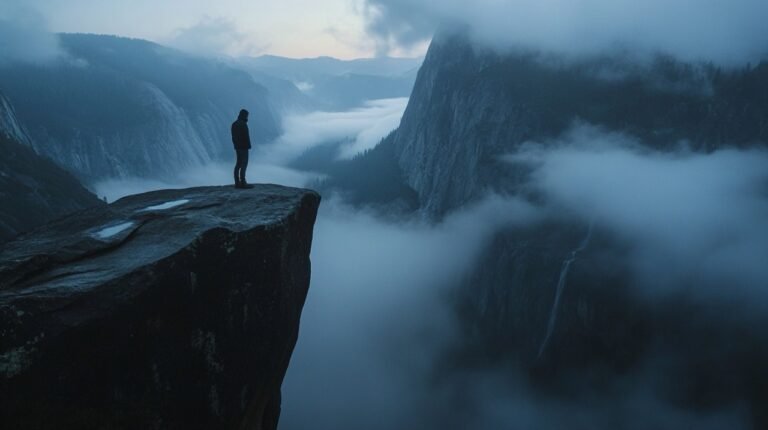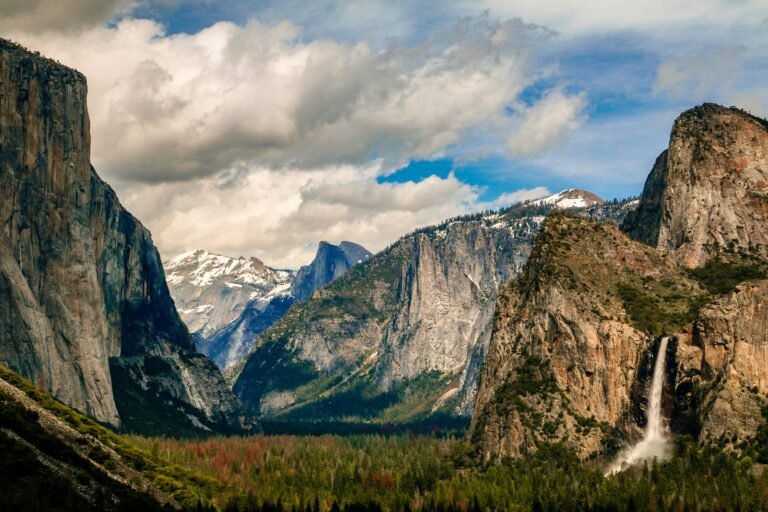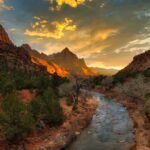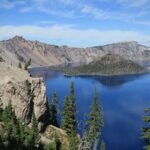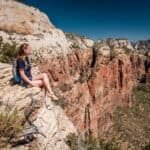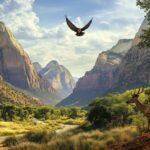Exploring Yosemite El Capitan
Introduction to Yosemite
Yosemite National Park is like a candy store for nature lovers and thrill-seekers. Nestled in California’s Sierra Nevada mountains, it’s a bit of heaven covering over 1,200 square miles. Imagine iconic granite hulks like El Capitan rising up against the blue sky, plus grand waterfalls, ancient sequoia trees, and critters galore. Whether you’re pitching a tent for Yosemite camping or hoofing it along trails, Yosemite serves up a little something special for everyone.
Yosemite’s Geological Significance

Think of Yosemite’s rocks as history books written over hundreds of millions of years. Carved by glaciers, the park’s wild terrain is a must-see testament to Mother Nature’s craftsmanship. With over 90% of the park made up of Cretaceous granitic rocks, you’ll see sheer cliffs, peaks, and domes that are as jaw-dropping as Grandma’s Sunday roast (National Park Service).
| Geologic Feature | Description |
|---|---|
| Granitic Rocks | Born long ago (about 105-85 million years back), these rocks are behind the show-stopping views of Yosemite Valley and Half Dome (USGS) |
| Glacially Polished Granite | Nature’s polish from glaciers, leaving smooth surfaces and round domes |
| U-Shaped Valleys | Glaciers carved these good-looking valleys, with Yosemite Valley as the prime example |
| Jagged Peaks & Rounded Domes | Stars include El Capitan and Half Dome |
Glaciers have had a big hand in crafting Yosemite’s grandeur. Over time, they chiseled out U-shaped canyons, dreamy waterfalls, and icy lakes. Even now, the Lyell and Maclure glaciers, though shrinking, are proof of today’s changing climate.
When planning your adventure to this rock-star national park, soaking up knowledge about its ancient past and dazzling beauty can seriously up your experience game. Don’t forget to snag a guide on Yosemite hiking trails and stay on top of Yosemite weather to ensure you make memories of a lifetime.
The Magnificent El Capitan
Height and Formation
El Capitan is like a celebrity in Yosemite National Park, standing proud almost 3,600 feet above the valley and hitting an altitude of 7,500 feet above sea level. It’s a rock star in the literal sense, pulling in visitors from everywhere. Think of it as nature’s way of showing off a little (NationalPark-Adventures).
This big chunk of granite tells tales of old geological drama. Formed from pale, coarse-grained granite about 100 million years ago and later carved by glaciers during the Sherwin Glaciation about a million years back, it’s got stories that stretch back further than the pyramids (Wikipedia). If mountains could gossip, El Capitan would have the juiciest tales.
| Feature | Description |
|---|---|
| Height | 3,600 feet from the valley foot |
| Elevation | 7,500 feet above sea level |
| Composition | Pale, rough-and-ready granite |
| Glacial handprint | During the Sherwin Glaciation |
Curious about other rock legends of Yosemite? Check out our take on Yosemite’s Iconic Landforms.
Climbing Challenges
When it comes to rock climbing, El Capitan is like the rock star’s concert that every climber wants tickets for. Back in ’57, Warren Harding busted out the first climb up ‘The Nose,’ crafting a path for climbers to chase up this giant rock face ever since. Every route has its own set of dramas and could rival any soap opera with those views.
| Route | First Ascent | Special Note |
|---|---|---|
| The Nose | 1957 – Warren Harding | Most popular route |
| Freerider | Alex Honnold (Bold Solo) | First free solo in 2017 |
Climbing El Capitan isn’t all muscles and sweat; it’s a head game too. Those granite walls don’t play nice—almost straight up, they challenge even the brave-hearted. Climbers often spend nights on ledges smaller than a single bed, or in their cozy portaledges.
Ropes, harnesses, and cams are like climbers’ BFFs, vital for the safety dance up this rock. And then there’s Alex Honnold, who upped the stakes with his 2017 free solo climb—no ropes, no gear, just guts. Now that’s what you call living on the edge (Wikipedia).
Not up for the climb but still want those killer views? Platypus yourself at the best viewing spots of El Capitan laid out in our Viewing El Capitan guide.
Before venturing out, arm yourself with info about Yosemite’s weather conditions. You’ll also want your lodging or camping nailed down beforehand for the full experience, so peek at lodging and camping reservations. And while you’re there, don’t miss out on the magical Firefall show when Horsetail Fall lights up like it’s on fire with the setting sun.
Hiking the El Capitan Trail
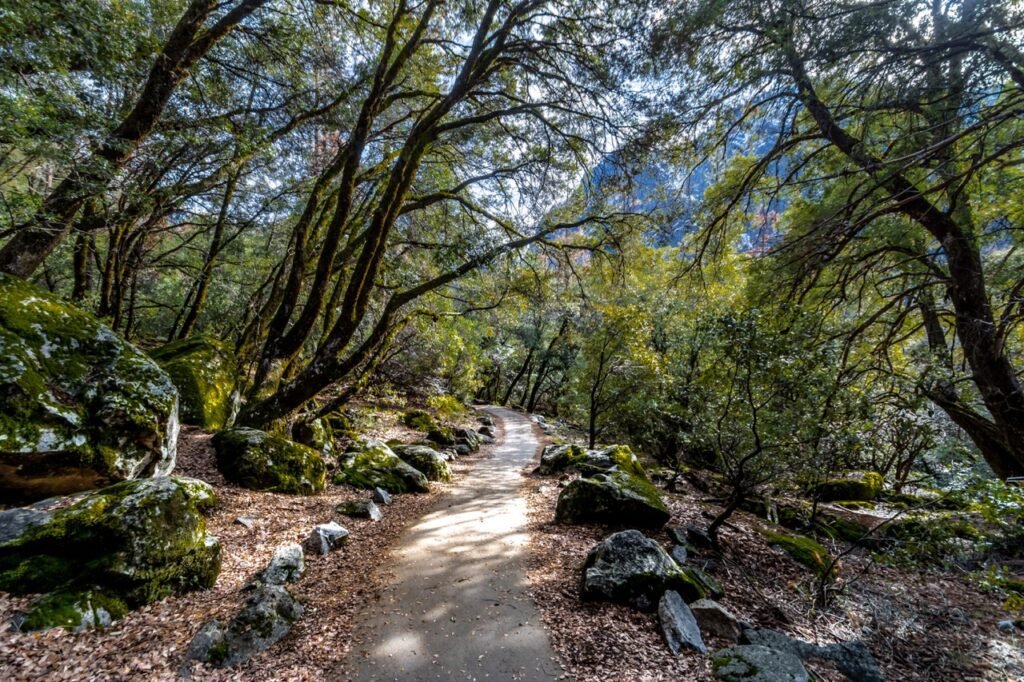
If you’re up for a rockin’ adventure, El Capitan is calling your name! This eye-popping granite behemoth is tucked inside Yosemite National Park and promises hikes that are just as thrilling as they are spectacular. Whether you’re a hiking junkie or someone simply looking for a story to tell, you’ve gotta try this trail for its stunning views and boot-camp-worthy challenges.
Trail Overview
The El Capitan Trail is famous for pulling no punches—it’s a path that gives back what you put in. You’re looking at 20 miles of heart-pumping trek, loaded with WOW moments along the way.
- Starting Point: Lace-up at the Yosemite Valley Trailhead
- Elevation Gain: You’re climbing 5,200 feet, folks!
- Features: Jaw-dropping views, a peek at Mother Nature’s variety show of plants and critters, and an optional Eagle Peak side show.
This trail dishes out Mother Nature at her finest, making it a bucket-list trek for those who live to see the great outdoors.
Trail Difficulty and Duration
Not to scare ya, but El Capitan Trail is one tough cookie. With its grit-testing slopes, it’s perfect for those who love a challenge. Get your prep game on!
| Trail Metric | Details |
|---|---|
| Length | Close enough to 20 miles—you’ll feel it! |
| Elevation Gain | A knee-trembling 5,200 feet |
| Estimated Duration | Set aside a good 8-12 hours |
Make sure to kick things off early so you don’t find yourself groping around in the dark on your way back. Key to this adventure is staying hydrated, feeding your engine (a.k.a. you), and keeping a chill pace.
This mission isn’t for the faint-hearted, so pack your gear like a pro and secure yosemite camping reservations if a one-day blitz sounds bonkers.
For those selfie moments in mind, try catching El Capitan from different spots. Want a choice spot? Tunnel View and the coming-to-life scenes of El Capitan Meadow will do you right.
Before you hit the gravel, give a peek at the yosemite national park weather forecast and yosemite national park road conditions so you’re not caught with any surprises.
Get ready for an awe-inspiring grind, not to mention the bragging rights, by checking out the yosemite hiking trails. Arm yourself with all the intel and gear you need, then soak up the splendor that is El Capitan!
Glacial Influence on Yosemite
Imagine wandering through a place where ancient ice once roamed like a natural artist, carving and chiseling a masterpiece over millions of years. That’s exactly what happened at Yosemite National Park. Its breathtaking sights are truly the handiwork of glaciers, and understanding this icy tale gives you a whole new appreciation for its majesty.
Formation of Yosemite’s Landscape
A couple million years back, glaciers started leaving their mark around what we now call Yosemite. Mother Nature had some crafty plans, stealing the show with more than 40 rounds of freezing and thawing that turned rocks into magic. This frosty choreography shaped Yosemite Valley and the surrounding canyons and lakes you roam today (USGS).
Around 10 million years ago, the mighty Sierra Nevada began its uplift, cracking the earth here and there, shaking things up. This entire geological drama led to some serious erosion, showing off those shiny granitic and metamorphic rocks at spots like Tioga Pass and Virginia Canyon.
Here’s how the different icy eras shaped the scenery:
| Glaciation Period | Time Frame (Years Ago) | Characteristics |
|---|---|---|
| Pre-Tahoe Glaciation | >70,000 | Laid down the basic design |
| Tahoe Glaciation | 60,000 – 70,000 | Refined valleys with finesse |
| Tioga Glaciation | 30,000 – 60,000 | Molded Lake Russell at the top of the world |
Imagine glaciers sketching out Yosemite Valley. Those early ice sheets were the unsung heroes before Tioga and Tahoe slick-stylists came along. Curious about ancient glacial clues? Just peek at the perched, lost-boulder artists, known as erratics, holding their ground above the valley.
Geologic Legacy of Glaciers
The giant glaciers of yesteryear painted bold strokes across Yosemite, leaving behind jaw-dropping sights. Most of the park’s rocks are tough and granitic, thanks to slow, underground cooling that gave them some snazzy, large crystals. You’ll stumble on volcanic pieces like basalt, while metamorphic rocks got a makeover from intense heat and pressure (USGS).
Yosemite’s iconic granite domes and cliffs, like the famous El Capitan, owe their stunning silhouettes to glaciation. The Tioga period, roughly 30,000 to 60,000 years ago, was a series of glacial gymnasts making lasting impressions on Tuolumne Meadows and the Sierra Nevada’s facade. Those icy acrobatics still echo in the landscape today (Yosemite National Park).
If you’re itching to uncover more geological gems, dive into our tales of Yosemite Glacier Point and check out the Yosemite Map. Ready to pack your bags and tackle this natural wonder? Plan your escapade with tips on Yosemite Valley Lodging and snag those Yosemite Camping Reservations. Enjoy the ride!
Yosemite’s Iconic Landforms
Yosemite National Park isn’t just a pretty picture, it’s like Mother Nature’s masterclass in geology. We’re talking jaw-dropping features that you won’t forget in a hurry. Half Dome is the rock star, but there are plenty more awesome formations waiting for your admiration.
Half Dome: Nature’s Wonder

Half Dome, that magnificent big fella, is the poster child for Yosemite. Soaring to nearly 8,900 feet, it looms 5,000 feet above the Yosemite Valley floor—now that’s a whole lot of granite. One side is smooth like it went through a season of America’s Next Top Model, and the other is a steep drop, giving it that fabulous contrast.
| Feature | Description |
|---|---|
| Elevation | 8,900 feet |
| Valley Rise | ~5,000 feet |
| Trail Ascent | 4,800 feet |
Climbing the Half Dome Trail is not for the faint-hearted. You’ve got to earn that view, my friend, with a thigh-busting 4,800-foot climb, and those last 400 feet have you hanging onto cables like it’s your lifeline (NationalPark-Adventures). But once at the top? Pure magic.
Natural Features in Yosemite
Think Yosemite, think epic terrain shaped over zillions of years to perfection. Glacial forces have sculpted these granite beauties, including El Capitan, Yosemite Valley, and the almighty Half Dome. These spectacles aren’t just eye candy—they’re a window into the Sierra Nevada’s past life (National Park Service).
Main Attractions:
- El Capitan: This crazy big chunk of granite is like the coolest 3,000-foot billboard you’ve ever seen, luring both sightseers and climbers.
- Yosemite Valley: Molded by the ice, this valley puts glacial handiwork on full display.
- Glacier Point: Get the perfect Instagram shot here, with views spanning the valley, the mighty Half Dome, and roaring Yosemite Falls.
Yosemite’s rocks are mostly granite, sporting big, pretty crystals from chilling way below ground. You’ve also got volcanic flavors like basalt and those makeover rocks, the metamorphic type, born from fire and pressure (USGS).
| Rock Types | Examples |
|---|---|
| Granitic | Granite, Granodiorite |
| Volcanic Igneous | Basalt, Latite |
| Metamorphic | Schist, Gneiss |
Take a stroll in Yosemite Valley to see ancient ice work—glacial moves have left their mark. Upland erratics tell tales of the pre-Tahoe glacial age, where rocks stand defiant against erosion (Yosemite National Park).
For maps and the skinny on visiting, check out the Yosemite Map.
In a place like Yosemite, beauty isn’t just skin-deep. Whether you’re gazing up at Half Dome in utter amazement or unpicking the stories in the rocks, a trip to Yosemite National Park will stick with you.
Viewing El Capitan
El Capitan, the ginormous rock that’s like a massive stone skyscraper, proudly stands out in Yosemite National Park. With its epic 3,600-foot height and a reputation among climbers as a real challenge, it grabs everyone’s attention. You’ll definitely want to check out these prime spots to soak in its beauty.
Spectacular Viewing Locations
Getting a glimpse of El Capitan and its rugged charm is possible from several spots in Yosemite Valley:
- Bridalveil Straight: Snuggled near Bridalveil Fall, it gives you a killer view of El Capitan’s dramatic backdrop.
- Tunnel View: Offers picture-perfect scenes of El Capitan along with other beautiful sights.
- El Cap Meadow: Right under the massive rock itself, this meadow is a hot spot for photo-ops.
- El Capitan Picnic Area: A chill place where you can relax, munch on your snacks, and marvel at the granite giant.
| Viewing Location | What’s Cool About It |
|---|---|
| Bridalveil Straight | Close to Bridalveil Fall, stellar views in the background |
| Tunnel View | Wide-ranging views with other famous spots right in sight |
| El Cap Meadow | Get up close and personal with prime photo-taking chances |
| El Capitan Picnic Area | Laid-back vibe, perfect picnic-setting with majestic sights |
Be sure to peek at the Yosemite map for spot-on directions and details.
Unique Perspectives of El Capitan
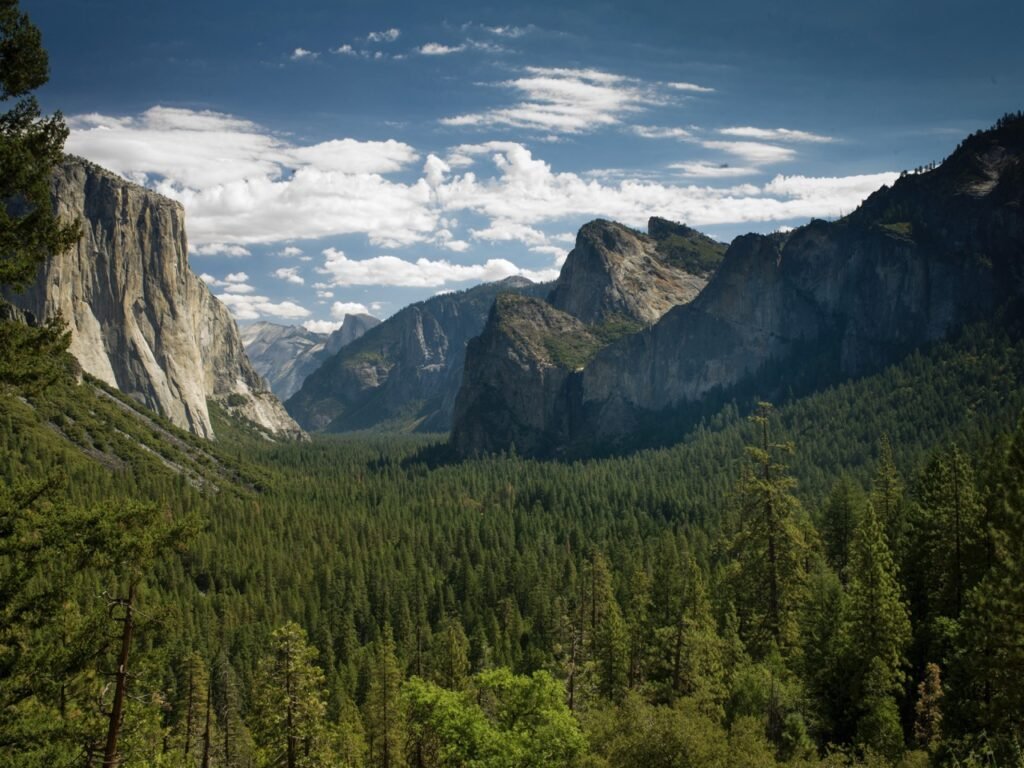
Seeing El Capitan from different spots reveals new, thrilling angles to enjoy this natural spectacle:
- Bridalveil Straight: Flashes El Capitan with a dramatic cascade setting, especially breathtaking in the springtime.
- Tunnel View: Panoramic include El Capitan, Half Dome, and Bridalveil Fall, making it an ace choice for clicking sunrise or sunset shots.
- El Cap Meadow: Gets you right up close, bringing out the massive size and the intricate rock details.
- El Capitan Picnic Area: Just right for munching while gazing, offering a tranquil vibe that escapes the usual tourist crush.
Make the most of your visit by checking yosemite weather ahead of time; the weather can put a whole new spin on El Capitan’s photogenic appeal.
For more incredible sights, see what else is waiting at yosemite valley and discover the yosemite half dome hike. Whether you’re trekking or simply admiring from a cozy spot, remember to play nice with nature so it sticks around for everyone to admire.
The Thrilling Firefall Show
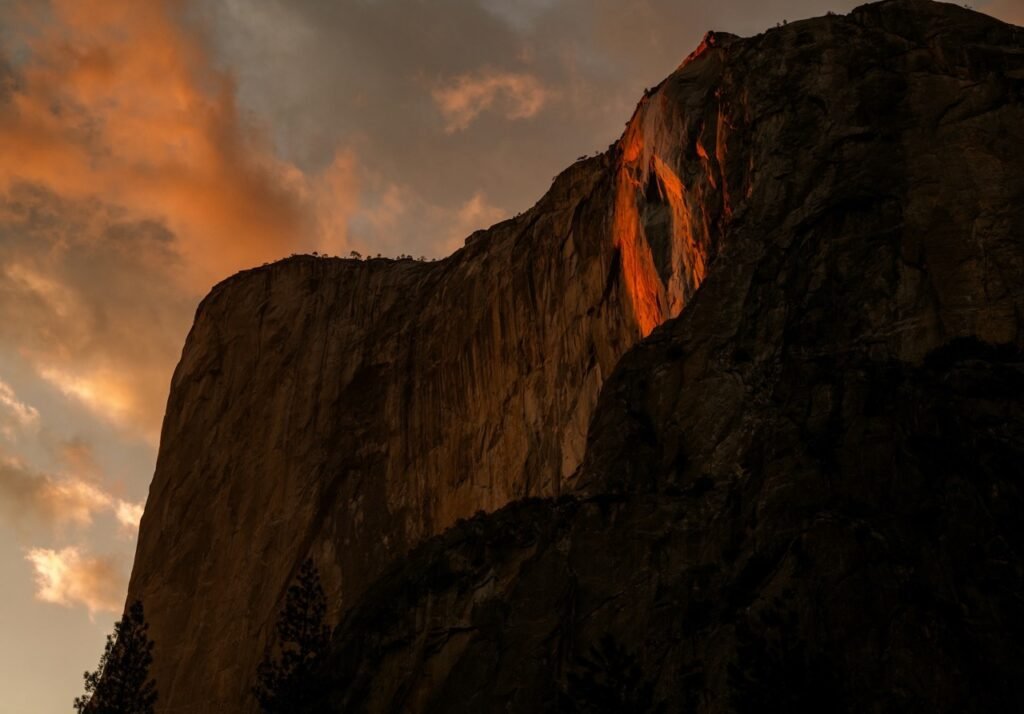
Every February, Yosemite National Park turns up the magic with its famous Firefall event. If you set your sights on an unforgettable natural wonder, this spectacle on El Capitan is where it’s at. Picture nature showing off in a way that’ll have you glued to the spot and snapping pictures like a paparazzo on a sugar high.
Firefall Event Details
So, here’s the scoop: between mid- to late-February, Horsetail Fall on El Capitan puts on a show that’ll make you question reality. When the sun hits just right, it lights up the waterfall, transforming it into a blazing ribbon of orange and red brilliance. For a few quick minutes, you can catch the cascade glowing like molten lava streaming down El Capitan (El Capitan).
Need-to-Know Info:
| What You Need to Know | Deets |
|---|---|
| When to Catch It | Mid- to late-February |
| Time it Happens | Just before sundown |
| Sweet Spot for Viewing | 5:30 PM – 6:00 PM |
| Weather? | Forecast calls for clear skies only |
To stay in the loop with the latest schedule and weather, check out the Yosemite National Park weather forecast.
Experiencing the Firefall
Checking out Firefall is one for the books. The trick is knowing where to post up for the best view. Yosemite Valley’s got some killer spots that’ll make sure you don’t miss anything.
Prime Spots to Set Up Shop:
- El Cap Meadow: Right at the base of El Capitan, this meadow’s got the front-row view everybody wants. Get there early to snag a good spot; it’s gonna get packed.
- El Capitan Picnic Area: Off Northside Drive, this spot’s chill with plenty of parking and tables. Perfect for the whole fam!
- Bridalveil Straight: It’s a bit further, but you’ll get a wide-angle view, so it’s not just the Firefall you’re seeing, but the whole scenery package.
- Tunnel View: While it gives a wider, less direct look, the panorama includes every bit of the fiery show across Yosemite Valley.
Top Tips to Keep in Mind:
- Get There Early: Trust us, the good spots go quick. Show up at least an hour before the party starts.
- Dress for the Chill: February’s no joke in Yosemite after dark. Layer up to stay toasty while you wait.
- Don’t Forget the Camera: Make sure your phone or camera has a good zoom. A tripod might make your shots even cooler.
- Snacks & Drinks: Why suffer waiting when you can sip and munch?
Plan ahead for a place to crash by checking out Yosemite Valley lodging or nearby hotels near Yosemite National Park. If you’ve got more time, check out our guide on visiting Yosemite National Park for other must-sees.
Experiencing the Firefall is one of those life moments that’ll steal your breath away and fill up your camera roll. Prep right, set up early, and let Yosemite’s El Capitan dazzle you with its spectacular performance.
Climbing Legends of El Capitan

El Capitan in Yosemite is like a magnet for climbers, pulling them in with its towering rock face and reputation as a nearly impossible feat.
History of Climbing El Capitan
It all kicked off back in 1957, when Warren Harding and his pals made their way to the top of El Cap via “The Nose.” It wasn’t some quick jaunt; it took them a whopping forty-five days spread over sixteen months. Since that epic climb, El Capitan has become the spot for climbers worldwide, offering routes that not only test your limits but also blow your mind with views of Yosemite Valley.
For most folks, getting up El Capitan is a week-long grind, but some folks like to race up there quicker. Some speedsters have actually made it up in less than a day! No kidding! These routes aren’t for the faint-hearted, calling for a mix of guts and stamina.
But here’s the kicker – El Capitan ain’t just famous for the thrill but also for its dangers. From 1905 to 2018, there have been over thirty deaths, and the numbers spiked a bit from 2013 to 2018. Climbers were likely trying to outdo each other and score social media glory.
Notable Climbers and Achievements
El Cap has seen some rock stars, climbers whose daring deeds made sure their names will be dropped in climbing circles for ages.
Alex Honnold
If you haven’t heard of Alex Honnold, you might have been living under a rock. His claim to fame? Climbing El Capitan all by himself on June 3, 2017, no ropes, no nothing. It was just him and the rock for nearly 4 hours, scaling the Freerider route. This jaw-dropping feat was captured in the film “Free Solo,” which snatched up quite a few awards.
Speed Climbing Records
Speed is the name of the game on El Cap, too. Alex Honnold (again, yeah, he’s that good) teamed up with Tommy Caldwell on June 6, 2018, to zip up “The Nose” in under 2 hours! Talk about fast.
| Notable Climbers | Achievement | Time/Duration |
|---|---|---|
| Warren Harding | First Ascent (The Nose) | 45 days |
| Alex Honnold | First Free Solo (Freerider) | 3 hours 56 minutes |
| Alex Honnold & Tommy Caldwell | Speed Climb Record (The Nose) | 1 hour 58 minutes 7 seconds |
If those stories have your heart racing and you’re keen to lace up your boots physically, scope out more on the Yosemite hiking trails or take on the challenge of the Yosemite Half Dome hike. Or, just head straight to see the mighty El Capitan yourself in the Yosemite National Park. You might just find the epic experience you’ve been craving.

